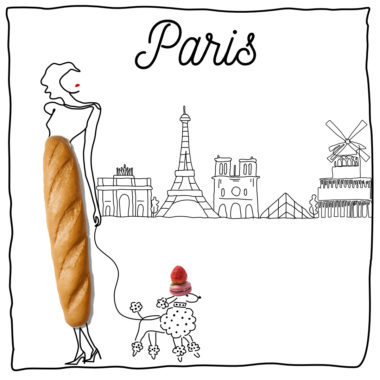Friendly disclaimer! We want to be as accurate as possible, but given these challenging times, we urge you to recheck that the venues are open when you decide to visit.
Vienna is the capital of Austria and its largest city. Art and culture are embedded in the soul of Vienna: imperial splendour, world-class museums, opera and classical music heritage along with a unique modernist legacy and a cosmopolitan flair. Walk down the parks and the Ringstrasse, experience the centuries-old cafe tradition and admire the astonishing architecture of a buzzing modern capital filled with history.
Church of the Most Holy Trinity (Wotruba Church)
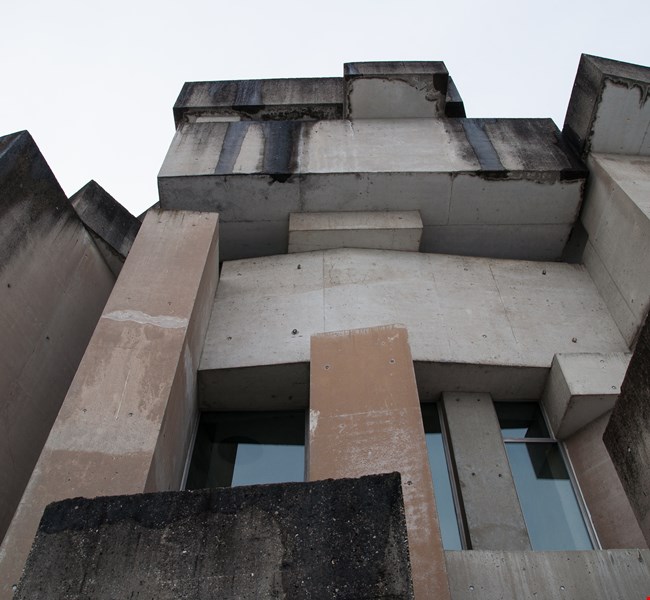
The church is a fine example of classic brutalist and cubist architecture, designed by the architect Fritz Wotruba. 152 concrete blocks have been assembled to form this unique-looking structure, with windows have been built into the remaining spaces. As strikingly different as the facade might look, the inside resembles a familiar church interior.
Useful Info:
- Location: Ottillingerpl. 1, Vienna
Christmas Markets in Vienna
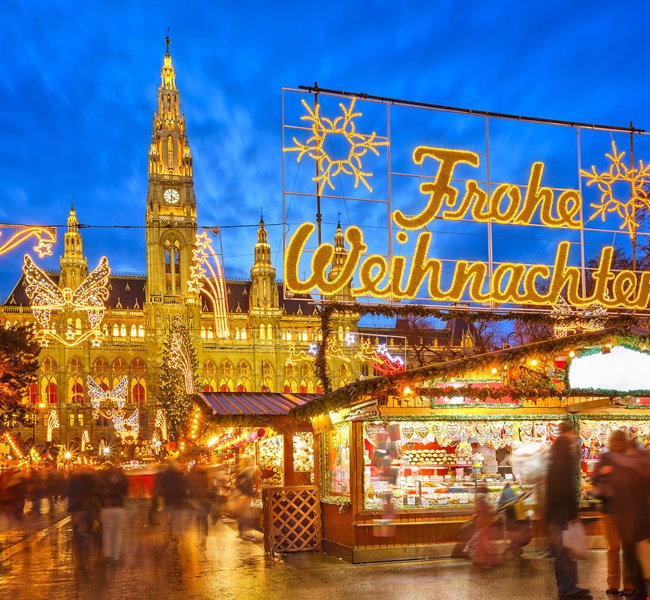
From mid-November until Christmas, a number of Markets in the city of Vienna start spreading early Christmas cheer. Mulled wine, roasted chestnuts, music and handcrafted goods sold at the little stalls create a warm and welcoming atmosphere, despite the at times cold Austrian winters. Some of the most exciting Christmas Markets include the Viennese Dream Christmas Market in front of the City Hall, the Christmas Village at Belvedere Palace (Prinz-Eugene Straße) and the Christmas and New Year’s Market at Schönbrunn Palace; there are many other smaller markets with similar charm.
Useful Info:
St. Stephen’s Cathedral
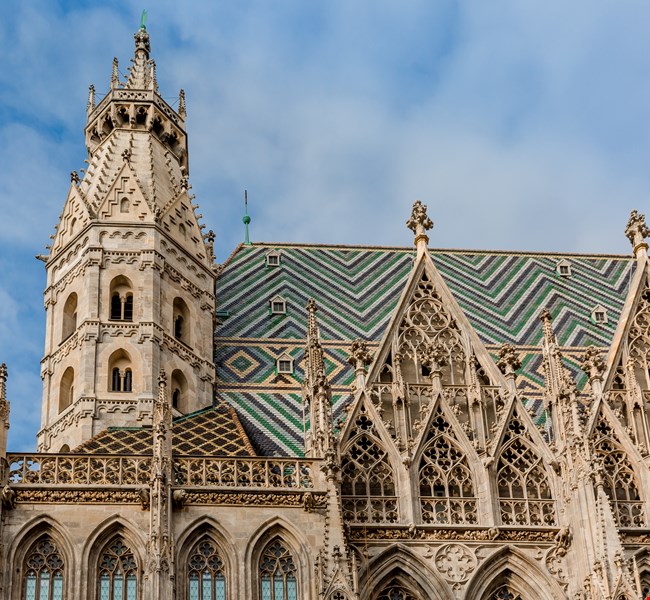
The religious and geographical centre of Vienna is St. Stephen’s Cathedral. The most prominent Gothic masterpiece of the city, with its stunning tiled roof and stone interiors, actually retains many artworks from different periods as the Romanic towers, the Baroque altar or the Renaissance decorations. When the Pummerin Bell, the largest bell in Austria, rings on New Year’s Eve, it is even broadcast on TV.
Useful Info:
- Location: Stephansplatz 3, district 1
- Website: www.stephanskirche.at
- Timings: Monday-Saturday: 6am –10pm, Sunday and public holidays: 7am–10pm
- How to reach: Underground: U1, U3 (Stephansplatz)
Secession

Featuring a golden dome decorated with laurels, this Art Nouveau exhibition building was constructed in 1897/98 by Joseph Maria Olbriach, a student of Otto Wagner, and is one of the most famous structures in Vienna. The Beethoven Frieze created by Gustav Klimt in 1902 is on permanent display on the lower level. Changing exhibitions featuring contemporary art are held on the entrance level.
Useful Info:
- Location: Friedrichstraße 12, 1010 Wien
- Website: www.secession.at/en
- Timings: Tuesday–Sunday: 10am–6pm
- How to reach: Underground: U1, U2, U4 (Karlsplatz)
Belvedere Palace
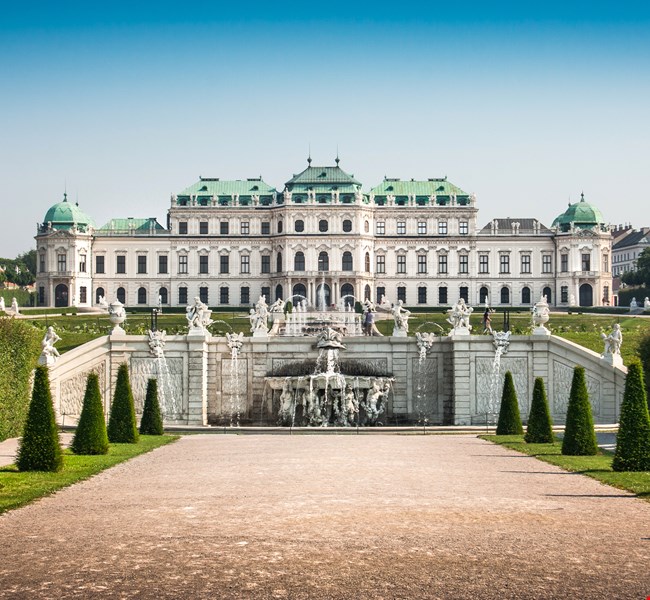
With its magnificent gardens, this former residence of Prince Eugen von Savoyen is one of the most beautiful Baroque ensembles in the world and a UNESCO World Heritage Site. The Upper Belvedere houses the world’s largest collection of paintings by Klimt, including the Art Nouveau icon “The Kiss” and and “Judith”. It also contains masterpieces by Schiele, Kokoschka, Waldmüller, Renoir, Monet and Van Gogh as well as important collections of works from the 19th and 20th centuries, the Baroque and the Middle Ages. Top-quality special exhibitions are put on in the Lower Belvedere and Orangery. The exquisite Baroque garden between the two palaces offers an extraordinary view of Vienna.
Useful Info:
- Location: Prinz Eugen-Straße 27, 1030 Wien
- Website: www.belvedere.at/en
- Timings: Upper Belvedere: 9am–6pm daily, Friday: 9am–9pm; Lower Belvedere and Orangery: 10am–6pm daily, Friday: 10am–9pm
- How to reach: Tram: D, O, 18 (Quartier Belvedere), D (Schloss Belvedere), Bus: 13A, 69A (Hauptbahnhof)
Hofburg Imperial Palace

The Imperial Palace was the residence of the Habsburg emperor until 1918. From the 13th century until just before the end of the monarchy, the area was fitted out in imperial splendour with its present-day size. The original Gothic building around today’s Schweizerhof was extended on a continuous basis, resulting in an extensive building complex formed of different sections, which contributes an essential character to the appearance of Vienna’s Old City. Europe’s largest imperial cultural complex today houses more than two dozen collections of international standing, including the Austrian National Library, the Imperial Treasury, the Imperial Apartments and the Sisi Museum, as well as the Spanish Riding School.
Useful Info:
- Location: Hofburg, Michaelerkuppe
- Website: www.hofburg-wien.at/en
- Timings: September–June: 9am–5:30pm daily, July–August: 9am–6pm daily.
- How to reach: Underground: U1, U3 (Stephansplatz), U3 (Herrengasse), U2, U3 (Volkstheater); Bus 48A (Dr.-Karl-Renner-Ring), 57A (Burgring); Tram: D, 1, 2 (Burgring).
Museums Quartier
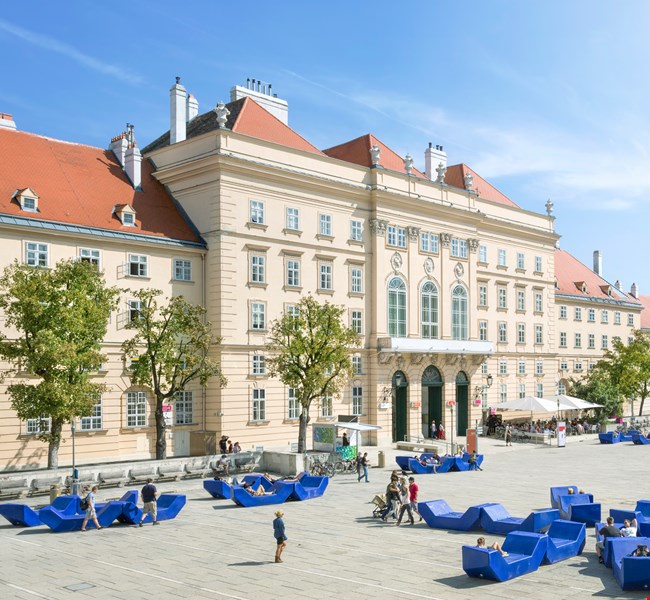
Vienna’s Museums Quartier (MQ) is one of the ten largest cultural districts in the world. At the edge of the Old City, in the former imperial stables, it unites facilities highlighting different fields of art with restaurants, coffeehouses and shops in an area of 60,000 square meters with a combination of Baroque buildings and modern architecture. This has created a colourful and diverse local scene against the backdrop of significant museums and collections.
Useful Info:
- Location: Museumsplatz 1, district 7
- Website: www.mqw.at/en
- How to reach: Underground: U2 ( Volkstheater or Museumsquartier), U3 (Volkstheater), Tram: 49 (Volkstheater)
Spanish Riding School
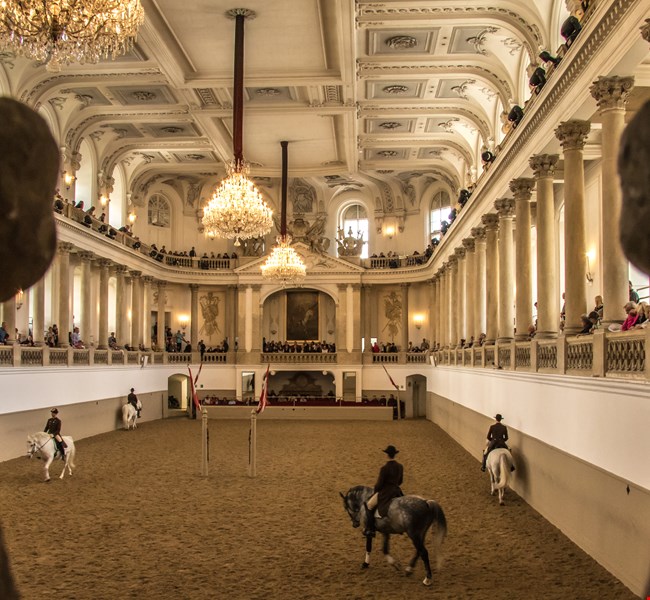
Founded in 1572, the Spanish Riding School has put on performances in the Baroque Winter Riding School since 1735. These shows represent the highest form of equestrian art: the Spanish Riding School in Vienna is the only institution in the world in which the classic equestrian art has been preserved and practised unchanged since the Renaissance. At the gala shows, visitors can enjoy unique presentations by the Lipizzaner horses in the most beautiful riding hall in the world. The morning session offers an insight into the years of training that the riders and their Lipizzaners go through.
Useful Info:
- Location: Michaelerplatz 1, 1010 Wien, Austria
- Website: www.srs.at/en
- Timings: Palace: Monday–Sunday: 9am–4pm. Friday, if there is an evening performance: 9am–7pm.
- More info: Entrance and cash desk at Josefsplatz.
- How to reach: Underground: U1 (Karlsplatz or Stephansplatz), U2, U4 (Karlsplatz), U3 (Herrengasse); Bus: 2A and 3A (Michaelerplatz); Tram: 1, 2, D (Kärntner Ring, Oper or Burgring), 62 (Kärntner Ring).
Kunst Haus Wien
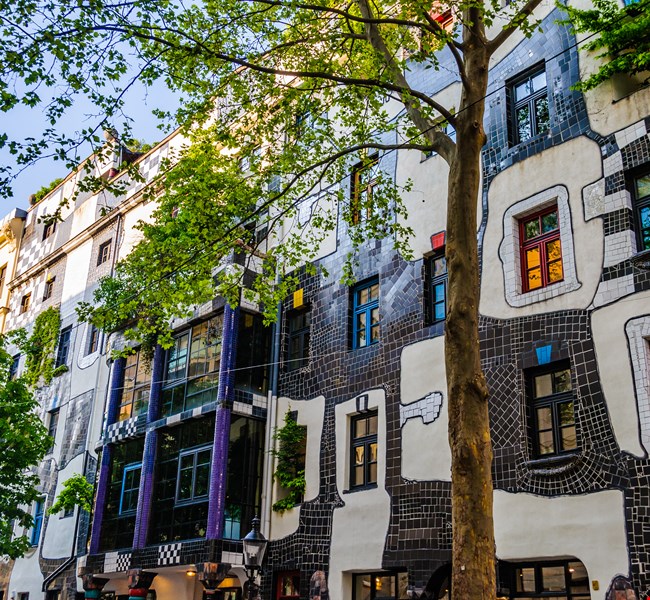
Friedensreich Hundertwasser created the Kunst Haus Wien with colourful tiles, tilted walls, uneven floors and irregular shapes often overgrown with rampant green: this was how the artist not only added new momentum to Vienna’s architecture but also established an exhibition centre that shows Hundertwasser’s works along with changing exhibitions of exciting contemporary art. The ground floor also contains a cafe and a shop.
Useful Info:
- Location: Untere Weißgerberstraße 13, 1030 Wien
- Website: www.kunsthauswien.com/en
- Timings: Daily 10am–6pm
- How to reach: Underground: U1, U4 (Schwedenplatz), continue on tram 1 (direction: “Prater Hauptallee”) to Radetzkyplatz or U3, U4 (Landstrasse/Wien Mitte), continue on tram O (direction: “Praterstern”) to Radetzkyplatz.
Leopold Museum

With its 41 paintings and 188 works on paper, the Leopold Museum in Vienna’s MuseumsQuartier has the world’s largest and most significant collection of works by Egon Schiele. The comprehensive collection, “Vienna 1900 and Art Nouveau”, is another highlight of the Leopold Museum. The paintings by Schiele’s mentor and friend Gustav Klimt are especially noteworthy. A program of special exhibitions also presents large-scale shows of work by internationally famous artists. The offer is rounded off by a well-curated museum shop and a cafe with a patio overlooking the main courtyard of the MuseumsQuartier.
Useful Info:
- Location: Museumsplatz 1
- Website: www.leopoldmuseum.org/en
- Timings: Daily: 10am–6pm, Thursday: 10am–9pm. June–August: Open daily.
- How to reach: Underground: U2, U3 (Volkstheater or Museumsquartier); Tram: 1, 2, D (Dr.-Karl-Renner-Ring).
Karlskirche
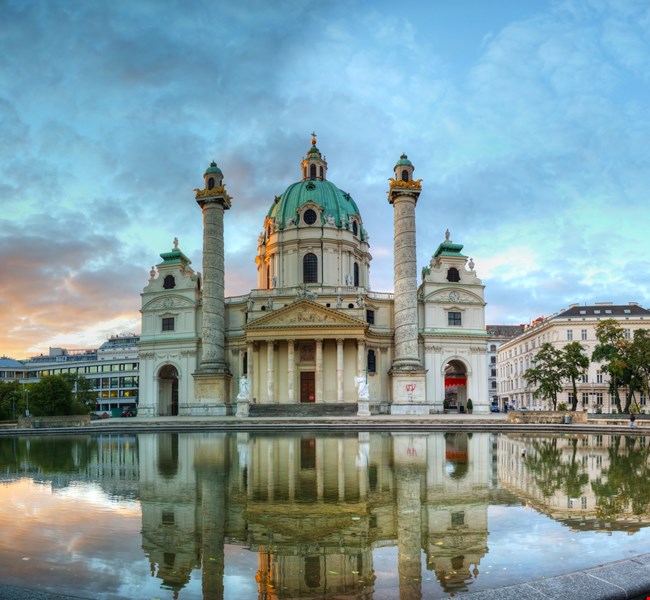
A striking sacred building with a large cupola and two giant twin columns standing at its sides, this church is the last great work of Baroque city architect Johann Bernhard Fischer von Erlach. Karlskirche is a European Baroque masterpiece, with symbolic design and use of classical architectural elements. Take the elevator to the dome for a close-up of the fresco-decorated interiors.
Useful Info:
- Location: Kreuzherrengasse 1
- Website: www.karlskirche.at
- Timings: Monday–Saturday: 9am–69m. Sunday & Holidays: 12noon–7pm.
- How to reach: Underground: U1, U2, U4 (Karlsplatz).
Albertina
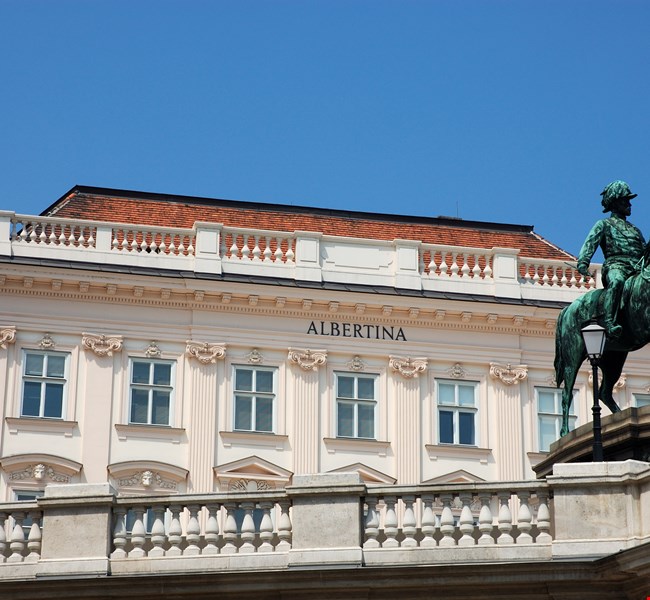
Albertina, Habsburg’s enormous collection of graphic arts, houses works by Dürer and Rubens along with masterpieces by Schiele, Cézanne, Klimt, Kokoschka, Picasso and Rauschenberg. The show, “Masterworks of Modernism: The Batliner Collection” illustrates the progression from Monet and Picasso to Gerhard Richter and Georg Baselitz and presents highlights from the last 130 years of art history. Albertina also has a collection of architectural works and photos (including Helmut Newton and Lisette Model among others), which are on display in special exhibitions.
Useful Info:
- Location: Albertinaplatz 1
- Website: www.albertina.at/en
- Timings: Daily 10am–6pm, Wednesday & Friday: 10am–9pm.
- How to reach: Underground: U1, U2, U4 (Karlsplatz); Tram: 1, 2, D, 62, 65 (Staatsoper/KärntnerRing); Bus: 3A (Albertina).
CMumok – Museum of Modern Art Ludwig Foundation Vienna
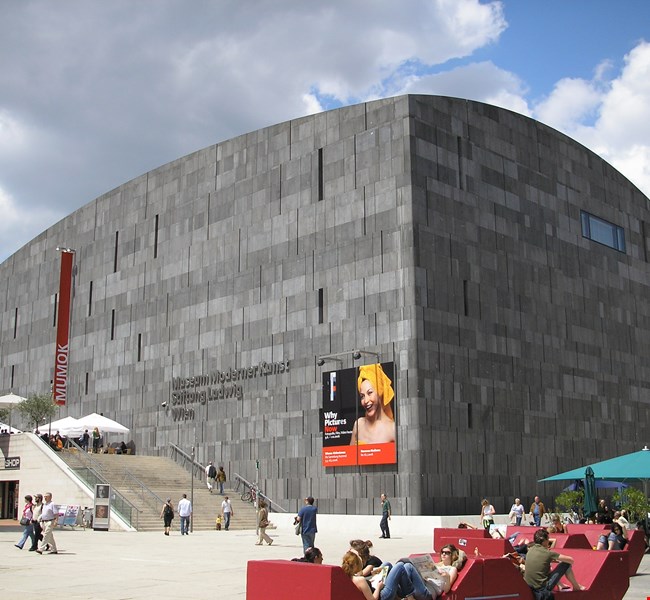
This huge basalt stone building houses art from the 20th century to the present day, with changing exhibits of everything from classic modern art to the essential artistic genres of the 1960s and 1970s, right up to contemporary artworks from the worlds of film, photography and video. Since 2011, a cinema designed by the artist Heimo Zobernig has also been housed here, focusing on the relationship between visual arts and film.
Useful Info:
- Location: Museumsplatz 1
- Website: www.mumok.at/en
- Timings: Monday: 2pm–7pm, Tuesday–Sunday: 10am–7pm, Thursday: 10am–9pm.
- How to reach: Underground: U2, U3 (Volkstheater), U2 (Museumsquartier); Bus: 48A and 2A; Tram: 49.
The Prater & Giant Ferris Wheel
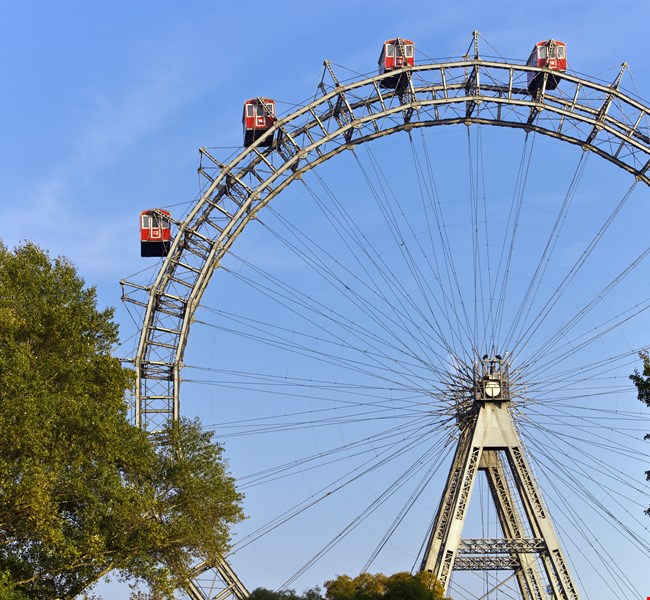
Vienna Prater is a large public park, a place of nostalgic dreams for some and an oasis of greenery for almost everyone. It is the home of the popular amusement park and the location of the Giant Ferris Wheel, one of Vienna’s most famous symbols. The Prater is open from March to October, but the Giant Ferris Wheel and a few other attractions are open year-round.
Useful Info:
- Location: Riesenradplatz 1, 1020 Wien
- Website: www.prater.at
- How to reach: Underground: U1, U2 (Praterstern).
Schönbrunn Palace

A visit to Vienna’s most famous palace is a must for art lovers. The Baroque building structures have been preserved with “Viennese Charm” and host the 1,441 rooms that were once inhabited by the imperial family, 40 of which you can still admire during the guided tours today. Explore the architectural treasures of the Palace Gardens, such as the Palm House and the the oldest zoo in the world, built in 1752 by Emperor Franz I.
Useful Info:
- Location: Schönbrunner Schloßstraße 47, 1130 Wien
- Website: www.schoenbrunn.at/en
- Timings: Daily 8:30am–5:30pm. From 1 July–31ugust: 8:30am–6:30pm.
- How to reach: Underground: U4 (Schönbrunn)
Museum of Natural History
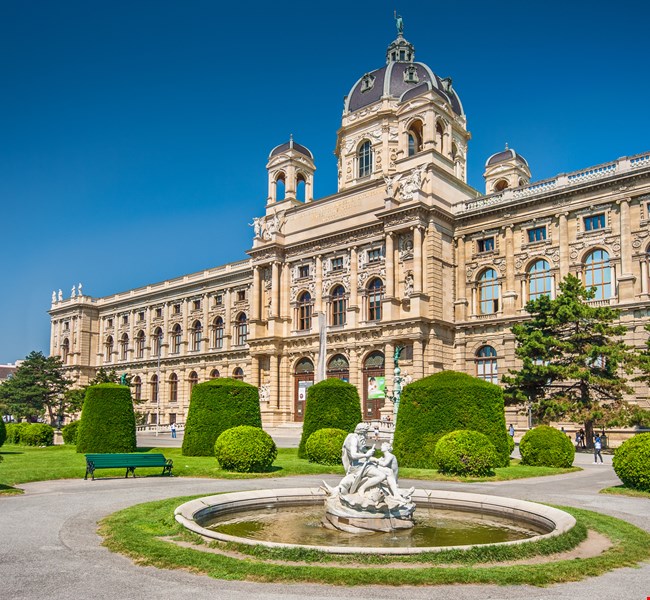
Two twin museum buildings were erected during the construction of Vienna’s Ringstrasse as monuments to the imperial collections: the Museum of Fine Arts and the Museum of Natural History. Embark on a journey through the breathtaking diversity of the natural world: from insects to precious stones and minerals to flying dinosaurs, you will experience fascinating insights into the history of our planet at this museum near the Imperial Palace. Numerous stuffed specimens of extinct species make this an invaluable collection. From the rooftop, where guided tours are offered regularly, you have the best view over Vienna’s Inner City and the Ringstrasse.
Useful Info:
- Location: Maria-Theresien-Platz
- Webste: www.nhm-wien.ac.at/en
- Timings: Thursday–Monday: 9am–6:30pm. Wednesday: 9:00am–9pm, Tuesday: Closed.
- How to reach: Underground: U2, U3 (Volkstheater)Tram: 1, 2, 46, 49, 71; Bus: 48A.
Vienna State Opera
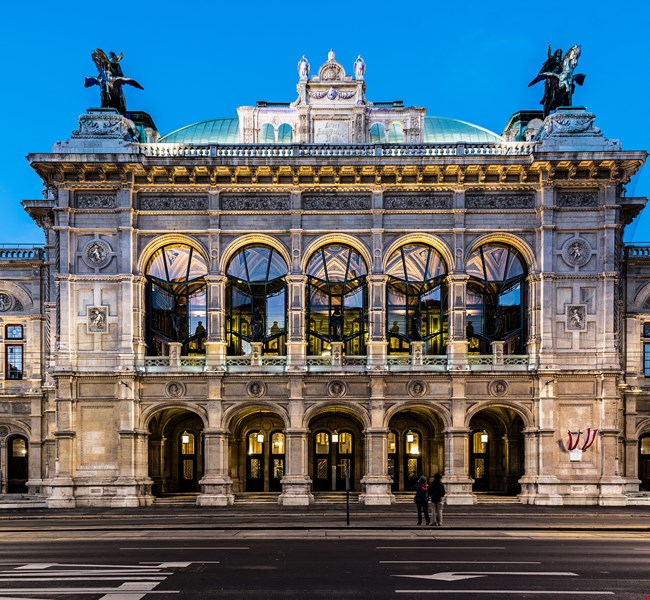
The Vienna State Opera is one of the most distinguished opera houses in the world. The magnificent building on Ringstrasse was constructed between 1861 and 1869 by August Siccardsburg and Eduard van der Nüll as Hofoperntheater (Court Opera). You can catch a glimpse of what goes on backstage and admire the architectural magnificence of this neo-Renaissance masterpiece with one of the 40-minute guided tours .
Useful Info:
- Location: Opernring 2
- Website: www.wiener-staatsoper.at
- How to reach: Underground: U1, U2, U4 (Karlsplatz); Tram: 1, 2, 62, D (Oper).
MAK – Austrian Museum of Applied Arts
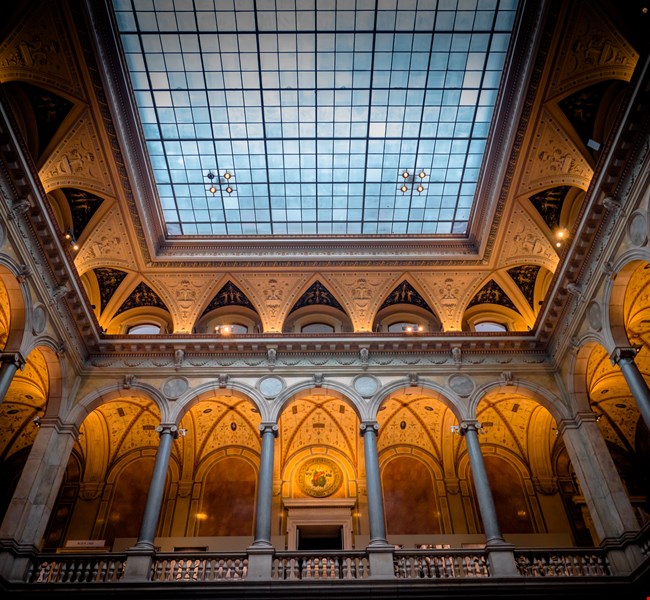
The MAK Austrian Museum of Applied Arts is unique in its ability to represent the history and significance of the Wiener Werkstätte. The archive, which was donated to the MAK in 1955 by its last owner, Alfred Hofmann, comprises, among others, about 16,000 design drawings and about 20,000 fabric samples. One of the highlights of the MAK’s collection is Gustav Klimt’s nine-part working drawings for the mosaic frieze in the dining room of the Palais Stoclet in Brussels. After a restoration process that took several years, this has again been on permanent display in the MAK since 2012.
Useful Info:
- Location: Stubenring 5
- Website: www.mak.at/en
- Timings: Tuesday: 10am–10pm. Wednesday–Sunday: 10am–6pm. Monday closed.
- How to reach: Underground: U3 (Stubentor), U4 (Landstraße); Tram: 2 (Stubentor); Bus: 1A and 74AStubentor.
Kunsthalle
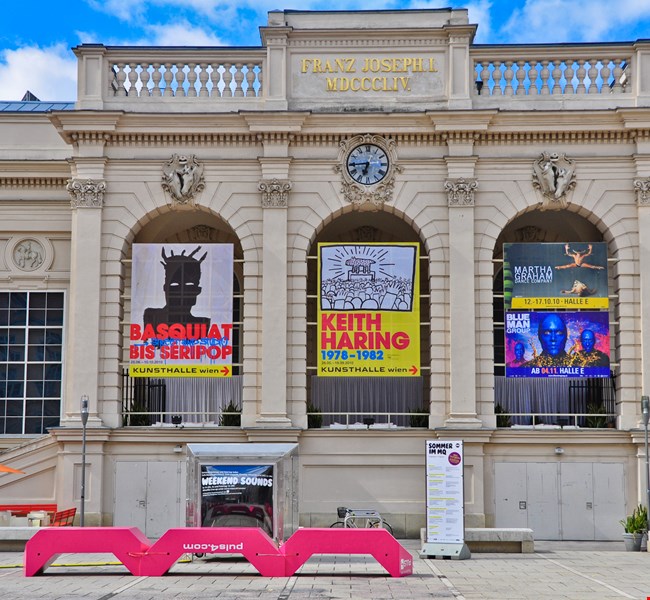
Kunsthalle displays international contemporary art. Located in the MuseumsQuartier, it presents exhibitions focused primarily on photography, video, film, installations and new media. Kunsthalle Wien calls itself the flexible and experimental outdoor exhibition site. There is also a cafe with a huge terrace, inviting visitors to stay a while after enjoying the art on display.
Useful Info:
- Location: Museumsplatz 1
- Website: www.kunsthallewien.at/en
- Timings: Tuesday–Sunday: 11am–7pm, Thursday: 11am–9pm.
- How to reach: Underground: U2 (Volkstheater or Museumsquartier), U3 (Volkstheater), Tram: 49 (Volkstheater).
Danube Tower
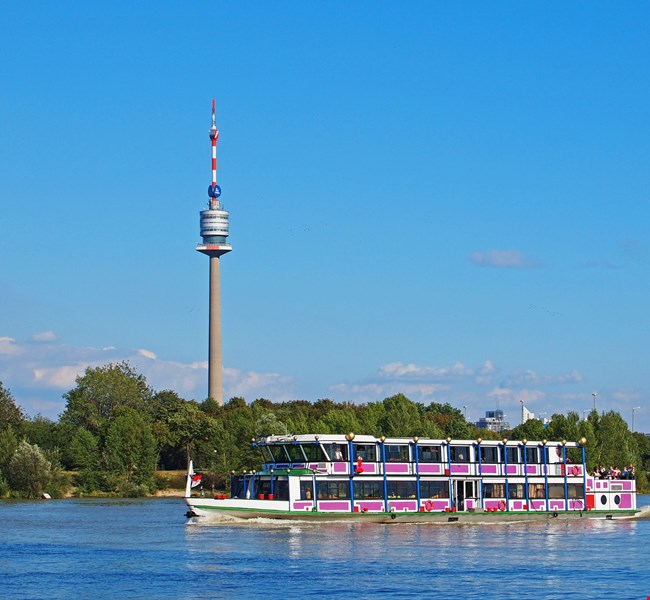
The Danube Tower offers an unforgettable view of Vienna’s Danube landscape, the Old City and the Vienna Woods from a height of 170 meters. The two express elevators take visitors to the viewing terrace and the two revolving cafe/restaurants in just 35 seconds. The Danube Tower was built in 1964 for the Vienna International Garden Festival, which is remembered today in the Danube Park. Large meadows, extensive jogging paths, children’s play areas and flowerbeds offer a relaxing space for visitors.
Useful Info:
- Location: Donauturmplatz 1, 1220 Wien
- Website: www.donauturm.at/en
- Timings: Daily 10am–12midnight, last drive-up at 11:30pm.
- How to reach: Underground: U1 Kaisermühlen (VIC)
Museum of Fine Arts Vienna (KHM)
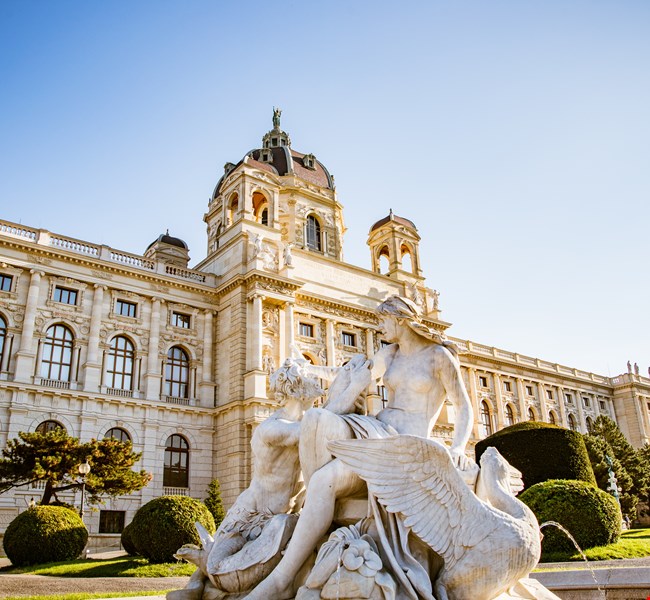
Emperor Franz Joseph constructed the Vienna Museum of Fine Arts for the imperial collections and with its treasures it now ranks as one of the most important museums in the world. Objects from five centuries, from ancient Egypt and ancient Greece to the end of the 18th century, are showcased here, beside an extraordinary art gallery with paintings by Rubens, Rembrandt, Raphael, Vermeer, Velázquez, Titian, Dürer and the largest Bruegel collection in the world. Gustav Klimt, in collaboration with his brother Ernst and Franz Matsch, created a series of paintings housed in the magnificent staircase located twelve meters above the museum’s lobby. A cafe can be found in the spectacular domed hall.
Useful Info:
- Location: Maria-Theresien-Platz
- Website: www.khm.at/en
- Timings: Tuesday–Sunday: 10am–6pm, Thursday: 10am–9pm. June–August open daily.
- More info: Admission util half an hour before closing time.
- How to reach: Underground: U2, U3 (Volkstheater); Tram: D, 1, 2 (Volkstheater); Bus: 2A and 57A.
House of the Sea
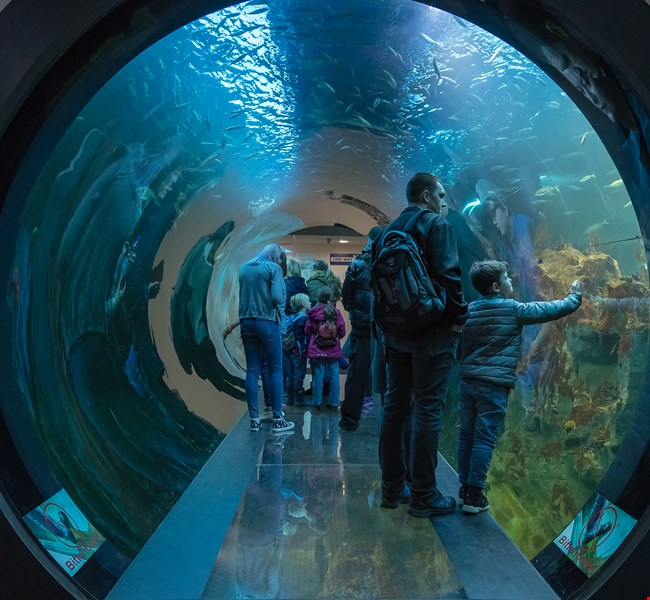
Schools of yellow, red and blue fish, green mambas and sharks: over 10,000 animals from every continent live in the aquariums, terrariums and in the 20-meter-high tropical house with a waterfall, a suspension bridge and mangrove landscape. The tropical house and Krokipark (crocodile park) also include free-flying birds as well as monkeys and crocodiles roaming freely. The terrarium houses poisonous and giant snakes, lizards, leaf-cutting ants and tarantulas. The House of the Sea is located in one of Vienna’s monumental anti-aircraft towers and houses hammerhead sharks. The cafe on the 11th floor provides visitors with a breathtaking view of Vienna.
Useful Info:
- Location: Fritz-Grünbaum-Platz 1, 1060 Wien
- Website: www.haus-des-meeres.at
- Timings: Daily: 9am–6pm, Thursday: 9am–9pm.
- More info: Admission until half an hour before closing time.
- How to reach: Underground: U3 (Neubaugasse); Bus: 13A, 14A, 57A (Haus des Meeres).
Imperial Treasury
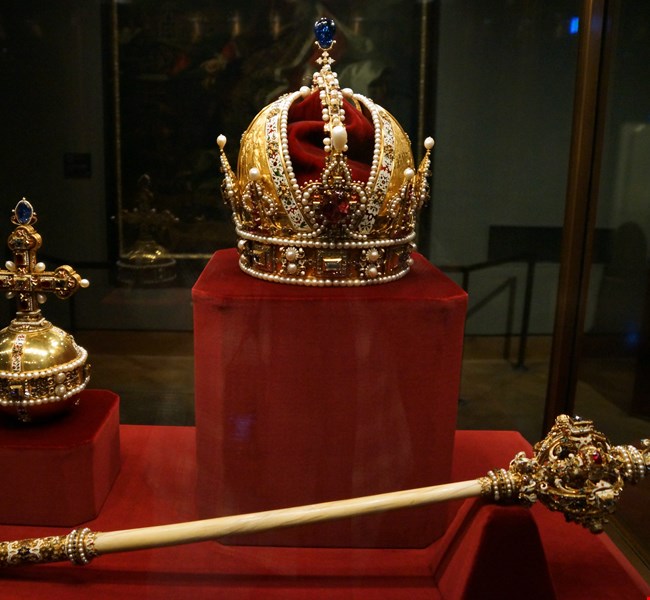
The medieval part of the Imperial Palace, the Schweizerhof, contains the unique treasures of the Habsburgs, including the Austrian imperial crown and the crown jewels of the Holy Roman Empire. Further highlights include the treasure of the Order of the Golden Fleece and the collections of the invaluable Burgundian treasures from the 15th century. Jewels belonging to the Habsburg empresses and pieces of the original jewellery belonging to Empress Elisabeth can also be seen here. You can also discover legendary treasures such as the Holy Lance of the 8th century, the largest cut emerald in the world and the horn of the fantastical unicorn.
Useful Info:
- Location: Hofburg, Schweizerhof
- Website: www.kaiserliche-schatzkammer.at/en
- Timings: Daily: 9am–5:30pm. Closed on Tuesday.
- More info: Admission until half an hour before closing time.
Concert Halls
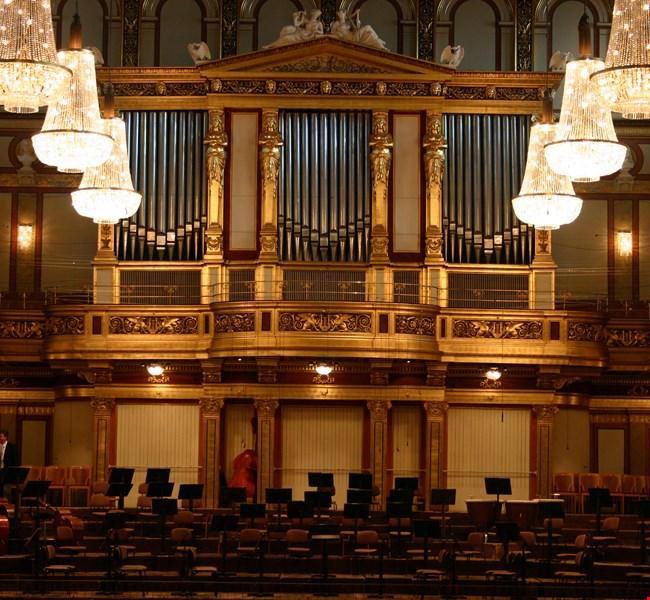
Vienna’s classical concert repertoire is dominated by two great concert halls: Vienna Musikverein and Vienna Konzerthaus. Millions of music fans around the world consider the Musikverein to be one of the most traditional concert houses, paying host to artists of the very highest calibre. From its Golden Hall, the annual New Year’s Concert of the Vienna Philharmonic is broadcast to the world on television. Another focal point of cultural life is the Wiener Konzerthaus in the atmospheric Art Nouveau style. Its musical bandwidth encompasses not only the classical repertoire, but also ranges from the Middle Age, Renaissance and Baroque music to Jazz, World and the progressive tones of the present day.
Useful Info:
- Location: Musikverein: Musikvereinsplatz 1 / Vienna Konzerthaus: Lothringerstraße 20.
- Website: www.musikverein.at and www.konzerthaus.at
- Timings: Musikverein: Monday–Friday: 9am–8pm, Saturday: 9m–1pm / Vienna Konzerthaus: Monday–Friday: 9am–7:45pm, Saturday: 10am–2pm.
House of Music

The House of Music is a multi-media world of experience. Experimentation is called for here: visitors paint sounds with their fingers and direct the Vienna Philharmonic Orchestra. The acoustic journey ranges from pre-natal hearing experiences to the development of the human ear and the first musical instruments right through to the sounds of the Cosmos. Geniuses such as Wolfgang Amadeus Mozart and Johann Strauss are presented with original music scores, programs, costumes and personal items. On the top floor of the Sound Museum, the Restaurant Huth offers fine Austrian cuisine with a wonderful view over the rooftops of Vienna.
Useful Info:
- Location: Seilerstätte 30, 1010 Wien
- Website: www.hausdermusik.com/en
- Timings: Daily: 10am–10pm.
- How to reach: Underground: U1 (Karlsplatz or Stephansplatz), U2, U4 (Karlsplatz), U3 (Stephansplatz); Tram: 2, D and J (Oper).
Central Cemetery

The second largest cemetery in Europe is home to graves of numerous celebrated personas, including composers Beethoven, Strauss, Mozart and Salieri. The multi-denominational cemetery represents a unique park landscape, hosting a Funeral Museum, monumental tombs of honour and an Art Nouveau cemetery church Lueger Kirche.
Useful Info:
- Location: Simmeringer Hauptstraße 234, 1110 Wien (Main Gate)
- Website: www.friedhoefewien.at/en
- Timings: November–February: 8am–5pm, March & October: 7am–6pm, April–September: 7am–7pm.
- How to reach: Tram: 6, 71 (Zentralfriedhof).
Vienna Boys’ Choir
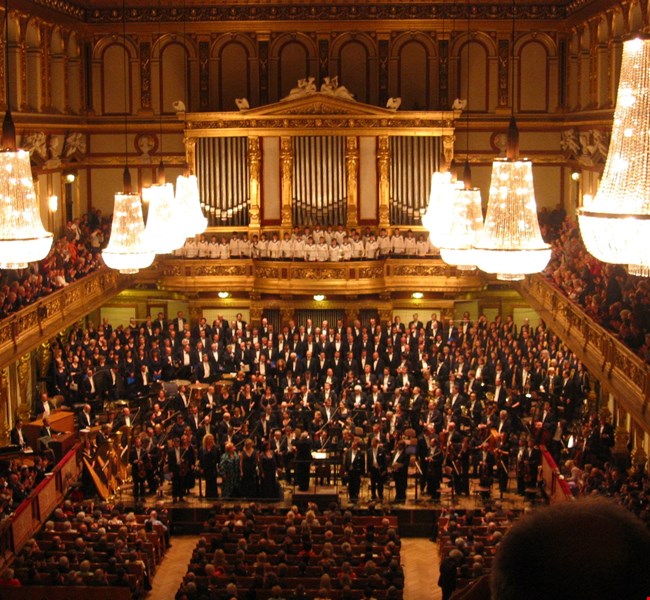
Vienna Boys’ Choir is a world-famous choir of boy sopranos and altos. In Vienna, they regularly appear in the Chapel of the Imperial Palace and in their own new concert hall “MuTh”, which was opened in 2012 and is located in the Augarten. The hall is used as a rehearsal and performance venue for the Vienna Boys’ Choir and as a centre for music and theatre for other children and young people. Collaborations are planned with established festivals, the Konzerthaus, the Vienna State Opera and Theater an der Wien.
Useful Info:
- Location: Obere Donaustraße 1c
- Website: www.wienersaengerknaben.at/en
- More info: www.muth.at/en




